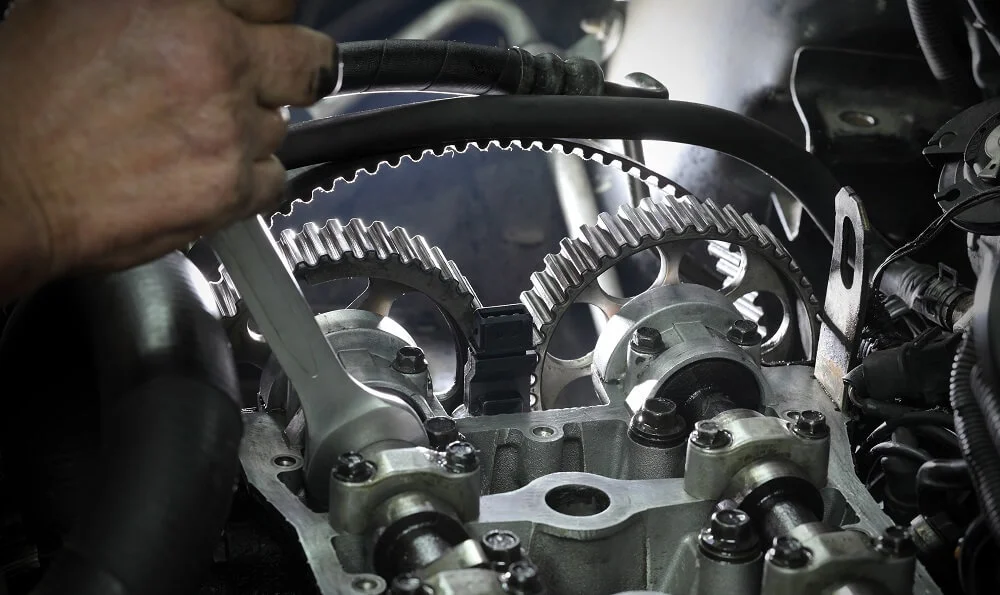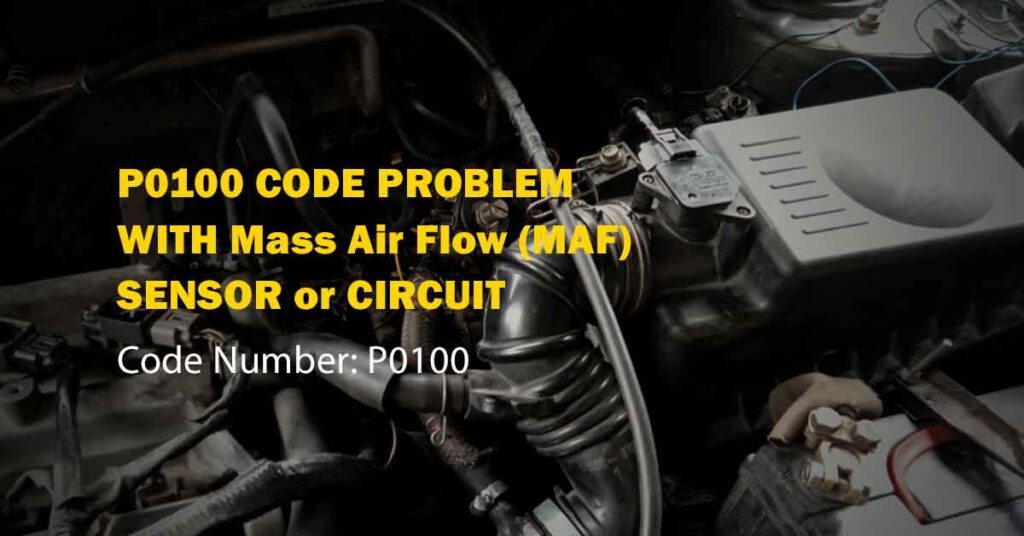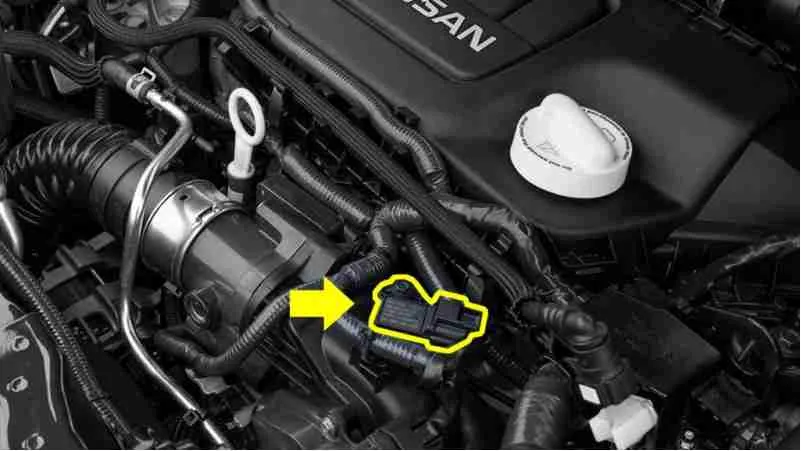P0180 Code Fuel Temperature Sensor A Circuit Malfunction
Greetings and thank you for joining us on our P0180 Code Survival Guide! This article will explain the significance of the P0180 code. It will highlight how important it is to deal with it quickly.
It will also give an in-depth review of the code and suggest potential fixes. By the conclusion, you will possess the necessary knowledge to ensure the seamless operation of your vehicle.
Understanding the Error code P0180
The P0180 code means there’s a problem with the fuel temperature sensor circuit, according to the OBD-II diagnostic system. This sensor measures the fuel’s temperature and offers valuable data to the engine control module (ECM).
Addressing the P0180 trouble code promptly is crucial. Ignoring it can cause problems and impact your vehicle’s performance.
Components Affected by the P0180 Trouble Code
The trouble code P0180 primarily affects the fuel temperature sensor, which is located in the fuel tank or fuel rail. Additionally, it can impact the ECM and other related components involved in fuel system monitoring and control.
Symptoms of a P0180 Trouble Code
When the P0180 trouble code is triggered, there are several signs that may indicate its presence. These include:
- Illuminated Check Engine Light: The most common symptom is the appearance of the Check Engine Light on your vehicle’s dashboard.
- Poor Fuel Efficiency: You may notice a decrease in fuel efficiency, as the ECM may not be able to accurately adjust the fuel-air mixture without proper temperature readings.
- Engine Misfires or Hesitation: In some cases, the engine may exhibit misfires or hesitation during acceleration or idle.
- Hard Starting: A difficulty in starting the engine, especially when the vehicle has been sitting for a while, can be another indication of a P0180 error code.
Causes of Fuel Temperature Sensor P0180
The P0180 can be triggered by various causes and triggers, including:
- Faulty Fuel Temperature Sensor: The primary cause of the P0180 code is a malfunctioning fuel temperature sensor.
- Wiring Issues: Damaged or corroded wiring connections can disrupt the proper communication between the fuel temperature sensor and the ECM.
- Electrical Problems: Faulty electrical grounds, short circuits, or blown fuses can also lead to the activation of the P0180 error code.
- Fuel System Malfunctions: Issues with the fuel pump, fuel filter, fuel temperature, or fuel rail can indirectly contribute to the P0180 error.
Common Faulty Components Related to the P0180 Error Code
While the fuel temperature sensor is the main culprit behind the P0180 error code, other components can also be affected, including:
- Engine Control Module (ECM): The ECM relies on accurate fuel temperature readings to make necessary adjustments, and a faulty fuel temperature sensor can interfere with this process.
- Wiring Harness: The wiring harness connects various components in the fuel system, including the fuel temperature sensor and any issues with it can impede proper temperature readings.
- Fuel Pump: A malfunctioning fuel pump may not provide adequate fuel pressure, leading to inaccurate readings from the fuel temperature sensor.
How Various Vehicle Systems Can Contribute to the Code
The P0180 error can be influenced by different vehicle systems. For example:
- Ignition System: A weak spark or faulty ignition components can affect the fuel burn efficiency, indirectly impacting the fuel temperature readings.
- Emission Control System: Problems in the emission control system can lead to abnormal fuel combustion, causing inaccurate fuel temperature measurements.
- Fuel Delivery System: Issues with the fuel pump, fuel injectors, or fuel lines can disrupt the fuel flow and affect the fuel temperature readings received by the sensor.
Diagnose Process for the P0180 Troubleshooting
When facing a P0180 fuel temperature sensor ‘a’ circuit malfunction, a systematic diagnostic process is crucial for effective troubleshooting. Here is a step-by-step guide to help you diagnose the code:
- Retrieve the Code: Use an OBD-II scanner or code reader to retrieve the P0180 and any accompanying codes stored in the ECM.
- Check the Wiring: Inspect the wiring harness connected to the fuel temperature sensor for any signs of damage, corrosion, or loose connections.
- Test the Fuel Temperature Sensor: Measure the resistance of the fuel temperature sensor using a multimeter, comparing the readings with the manufacturer’s specifications.
- Check the ECM: Inspect the ECM for any signs of damage or malfunction, ensuring that it is functioning properly.
- Test the Fuel System: Perform tests on the fuel system components, such as the fuel pump, fuel pressure regulator, and fuel filter, to ensure they are operating within their specified parameters.
Necessary Tools and Equipment for the Diagnostic Process
To effectively diagnose the P0180, you will need the following tools and equipment:
- OBD-II scanner or code reader: This device is essential for retrieving the P0180 code and any additional codes stored in the ECM.
- Multimeter: A multimeter is used to measure the resistance of the fuel temperature sensor and other electrical components.
- Wiring Diagrams: Wiring diagrams specific to your vehicle’s make and model are crucial for identifying and troubleshooting potential wiring issues.
- Service Manual: A service manual provides detailed instructions and specifications for testing various components related to the P0180 error code.

Importance of Professional Assistance During Diagnosis
While DIY diagnosis can be done, seeking professional assistance is highly recommended for accurate and efficient troubleshooting of the P0180 error code. Certified mechanics have the expertise, specialized tools, and access to vehicle-specific information to diagnose the issue correctly. They can save you time and minimize the risk of misdiagnosis or further damage to your vehicle.
Fix The P0180 Code
a) DIY Fixes
If you prefer tackling the P0180 error yourself, here are some DIY solutions to consider:
- Inspect and Clean Wiring Connections: Thoroughly inspect the wiring connections related to the fuel temperature sensor and clean any corrosion or dirt present.
- Replace the Fuel Temperature Sensor: If the fuel temperature sensor is determined to be faulty, carefully remove and replace it according to the manufacturer’s instructions.
- Test and Replace Other Components: If other components, such as the ECM or fuel pump, are suspected to be the cause, perform appropriate tests and replace them as necessary.
Tips for Beginners to Check and Fix Potential Issues for P0180 Fault Code
For beginners delving into DIY fixes, keep these tips in mind:
- Research and Gather Information: Take the time to research your specific vehicle’s make and model. Gather information about the P0180 error code, its common causes, and manufacturer recommendations for fixing it.
- Follow Proper Safety Procedures: Before starting any repairs, ensure your vehicle is parked on a level surface, the engine is turned off, and you have the necessary safety equipment, such as gloves and eye protection.
- Take it Step-by-Step: Follow the diagnostic process outlined in this guide and tackle each step systematically. Rushing through the process can lead to errors or overlooked issues.
Precautions and Safety Measures for DIY Fixes
When attempting DIY fixes for the P0180 fault code, it is crucial to exercise caution and follow these precautions:
- Disconnect the Battery: Before working on any electrical components or wiring, disconnect the vehicle’s battery to prevent potential accidents or short circuits.
- Read and Understand Instructions: Familiarize yourself with the manufacturer’s instructions for replacing components or performing tests. Follow the steps precisely to avoid damaging the vehicle or compromising your safety.
- Consult Experts: If you encounter any difficulties or uncertainties during the process, do not hesitate to seek advice from experienced mechanics or online automotive communities for guidance.
b) Professional Fixes
There are several benefits to seeking professional help for resolving the P0180 fault code :
- Expertise and Experience: Certified mechanics have extensive knowledge and experience in diagnosing and fixing automotive issues, including the P0180 error code. They can quickly identify the problem, saving you time and effort.
- Specialized Tools and Equipment: Professional repair facilities are equipped with specialized tools and diagnostic equipment necessary for accurate troubleshooting and repair.
- Warranty Coverage: If your vehicle is under warranty, having repairs done by a certified mechanic ensures that the warranty remains valid.
- Proper Repairs and Replacements: Professional mechanics ensure that all faulty components related to the P0180 fault code are properly repaired or replaced, reducing the risk of reoccurrence.
Common Repairs and Replacements
When seeking professional fixes for the P0180, common repairs, and replacements may include:
- Replacement of the Fuel Temperature Sensor: If the fuel temperature sensor is detected as faulty, a certified mechanic will remove and replace it with a new, high-quality sensor.
- Repairing Wiring Issues: If wiring problems are diagnosed, the mechanic will repair or replace damaged wiring connections, ensuring proper communication between the sensor and ECM.
- ECM Testing and Replacement: If the ECM is determined to be the cause, it may need testing or replacement, depending on its condition and the severity of the issue.
How to Find a Reliable Mechanic for Code P0180-Related Repairs
To find a reliable mechanic for code P0180-related repairs, consider these steps:
- Ask for Recommendations: Seek recommendations from friends, family, or colleagues who have had positive experiences with reputable mechanics.
- Check Online Reviews: Visit online review platforms to read feedback from previous customers regarding their experiences with local mechanics.
- Verify Certifications and Licenses: Ensure the mechanic you choose has appropriate certifications, such as Automotive Service Excellence (ASE) certification, and holds a valid license to operate.
- Request Estimates: Obtain estimates from multiple mechanics to compare pricing and ensure transparency in the repair process.
- Trust Your Intuition: Trust your instincts when interacting with potential mechanics. A reliable mechanic should be knowledgeable, professional, and transparent in their communication with you.
Maintenance Tips to Avoid the P0180 Code
Preventing the code P0180 is always better than dealing with its consequences. Here are essential maintenance practices to keep in mind:
- Regular Fuel System Inspections: Regularly inspect the fuel system components, including fuel lines, fuel pump, fuel filter, and fuel temperature sensor, for signs of wear, damage, or corrosion.
- Follow the Manufacturer’s Maintenance Schedule: Adhere to the maintenance schedule provided by the vehicle manufacturer. This includes regular tune-ups, oil changes, and filter replacements that help maintain the proper functioning of the entire fuel system.
- Use Quality Fuel: Make sure to use high-quality fuel to minimize potential issues related to fuel combustion and overall fuel system performance.
Importance of Following the Manufacturer’s Maintenance Schedule
Following the manufacturer’s maintenance schedule is vital for long-term vehicle health and preventing the P0180 error code. The maintenance schedule is designed based on extensive research and testing by the vehicle manufacturer. Regular maintenance helps identify and address potential problems proactively, ensuring that the fuel system and other critical components operate optimally.
Conclusion
In conclusion, the code P0180 can significantly impact your vehicle’s fuel system performance and overall reliability. By knowing the code, its causes, diagnostic processes, and fixing options, you can now deal with this problem quickly and efficiently.
Remember the importance of regular maintenance practices and seeking professional assistance when necessary. By following these guidelines, you will keep your car running smoothly and avoid further complications associated with the P0180 code. Happy driving!



